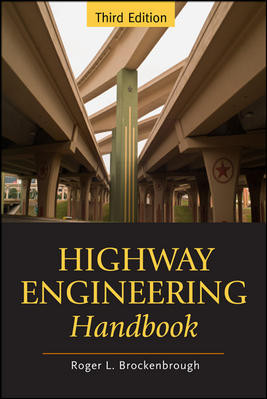Infrastructure Act
With IIJA Nearly a Year Old, White House Seeks to Speed Up Projects

White House director of infrastructure implementation Mitch Landrieu outlined what had been accomplished in the eleven months since the passage of the Infrastructure Investment and Jobs Act.
Image Courtesy of the White House
As the Biden administration continues to release more funds from the $1.2-trillion Infrastructure Investment and Jobs Act (IIJA), top officials also are putting a spotlight on finding ways to step up the pace for IIJA projects' delivery, from planning and permitting through engineering and construction.
The White House on Oct. 13 held an Accelerating Infrastructure Summit, bringing together state, local and federal officials, along with representatives from industry groups and organized labor to delve into strategies for shaving project-delivery times.
The White House also released an action plan for expediting infrastructure projects’ progress with the overall goal of delivering them “on time, on task and on budget.” The plan includes about 20 actions taken so far by the U.S. Dept. of Transportation and other federal agencies.
Opening the conference, Mitch Landrieu, White House director of infrastructure implementation, said that as the first anniversary of the IIJA’s enactment approaches on Nov. 15, about $180 billion in funds from the law have been announced or distributed.
But Landrieu added, “We must accelerate the pace by which the federal, state and local governments and the private sector deliver infrastructure projects to fully maximize the benefits of the law.”
He said federal agencies are focused on moving quickly on design, construction and permitting, But Landrieu also noted that more than 90% of IIJA’s funds will flow to states and other nonfederal entities, which will be the ones that issue project contracts. He said they also will have to seek ways to speed up those projects’ delivery.
New Tools for US DOT
The action plan includes a new U.S. DOT “project delivery center of excellence,” to help nonfederal project managers plan and implement infrastructure projects.
The center, among other things, will team up with the American Society of Civil Engineers (ASCE) and American Council of Engineering Companies (ACEC) to develop "templates and model language for transportation construction contracts," according to the plan.
Art Barrett, ACEC's board chair, who attended the summit, said that administration officials "recognize the government's valuable partnership with the private sector to deliver successful projects."
The new DOT center also plans to bring together several industry groups, including ASCE and the American Association of State Highway and Transportation Officials, American Road & Transportation Builders Association and American Public Transportation Association to analyze “root causes” for change orders and report to DOT on ways to reduce their use.
The plan says DOT will work with the groups to disseminate best practices to address change orders to project sponsors, beginning in 2023.
DOT also will broaden the use of the Federal Highway Administration's existing “Every Day Counts” federal-state collaborative program for expediting road and bridge projects to include the transit and rail.
DOT’s Build America Bureau, which oversees such operations as the TIFIA federal transportation loan program, in October is initiating a $10-million, five-year pilot program to speed rural projects along, through such actions as identifying innovative financing methods and using federal funds to pay for feasibility studies and engineering.
Among non-transportation agencies, the Environmental Protection Agency is starting a four-state pilot program to provide technical assistance to underserved areas with plans to replace lead drinking-water pipes.
The U.S. Army Corps of Engineers civil works program has several technical assistance programs for states and other nonfederal entities for water infrastructure projects.
Clearing Project Permitting Obstacles
Faster federal permitting—an issue that gained high visibility through Sen. Joe Manchin’s unsuccessful efforts to include permitting reforms in the recently enacted stopgap spending bill—also is in the action plan.
For example, the document notes that the Inflation Reduction Act has more than $1 billion over 10 years to assist agencies’ project review activities. That includes funds for FHWA and the Dept. of Energy to hire and train more staffers to carry out project reviews.
At the White House meeting, DOT Secretary Pete Buttigieg said, "President Biden has been very clear that he wants infrastructure to be delivered more quickly and efficiently than in the past, and importantly, to serve everyone in this country."
Buttigieg added, "So this is about hitting timelines without cutting corners."
One topic that resonated with speakers at the conference was the importance of getting members of the communities around infrastructure projects involved early on, even before a cost estimate is calculated.
Buttigieg noted that some people have said that engagement by members of communities slows projects down. But he said, "Our experience shows that the reverse can be true—that early community engagement, when it is done early and often and in a thorough and inclusive fashion, actually helps to meet the project timeline."
ASCE President-elect Maria Lehman, a speaker on one of the summit's panels, said, "Robust community involvement is really important."
Lehman, who is GHD's U.S. infrastructure lead, noted that two projects she worked on in New York State—the Mario Cuomo Bridge over the Hudson River and the Peace Bridge in Niagara Falls—had relatively speedy environmental reviews.
She said both projects moved from a National Environmental Policy Act notice of intent to a record of decision in 13 months. "It's doable," Lehman said. "But you have to be out there with the public regularly."
Related ASCE, ACEC, ARTBA Work
A White House fact sheet cited actions by engineering and construction organizations aimed at accelerating infrastructure projects, including ASCE 2022 guidance and training for engineers and project managers in speedier project delivery and "streamlined" procurement methods.
The White House document also notes what it calls a "landmark" ACEC-University of Colorado study released this month updating the design-build process for federal and nonfederal agencies.
Additionally, the fact sheet points to American Road & Transportation Builders Association guidance on better ways of assessing and allocating risk for design-build projects.


